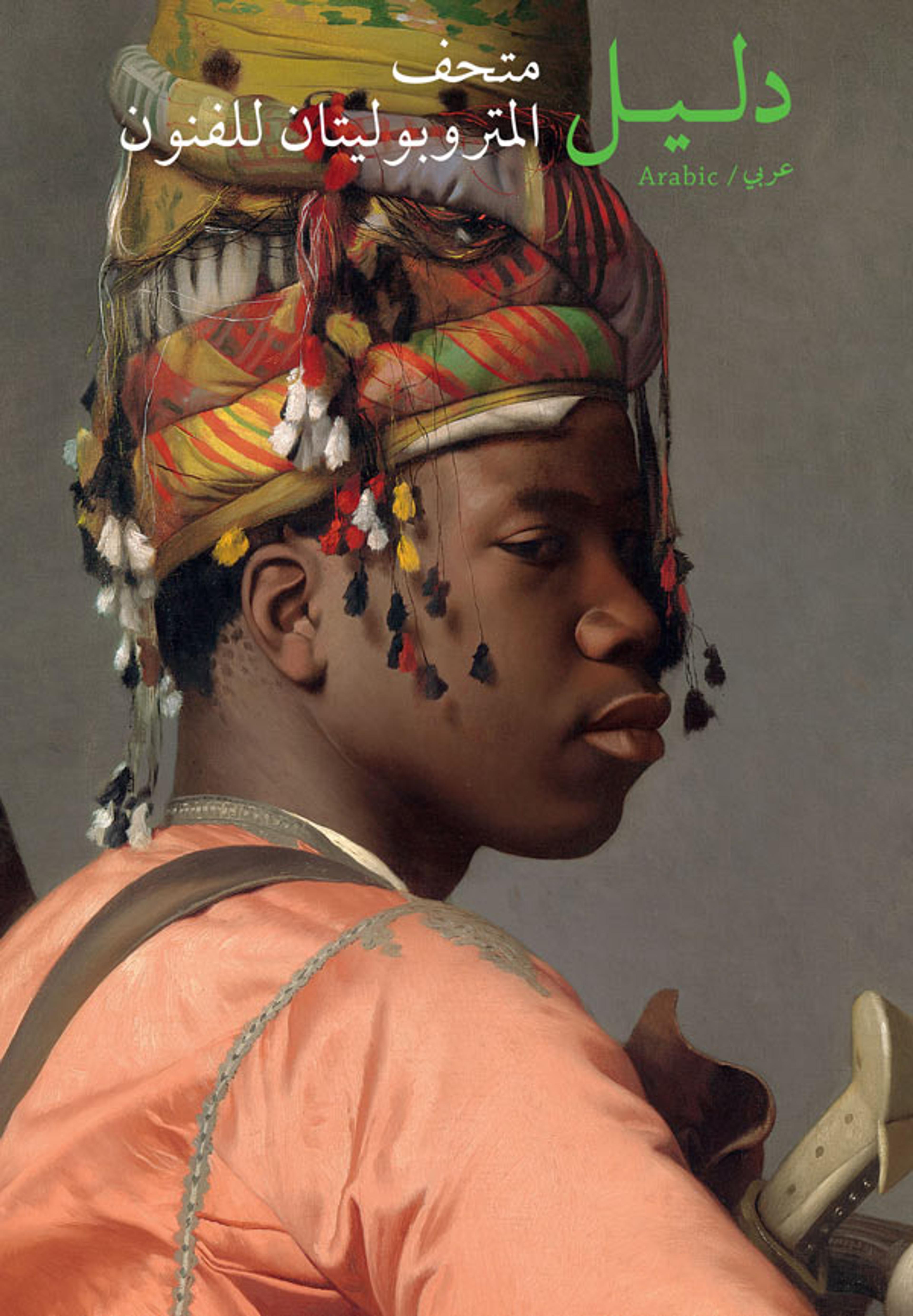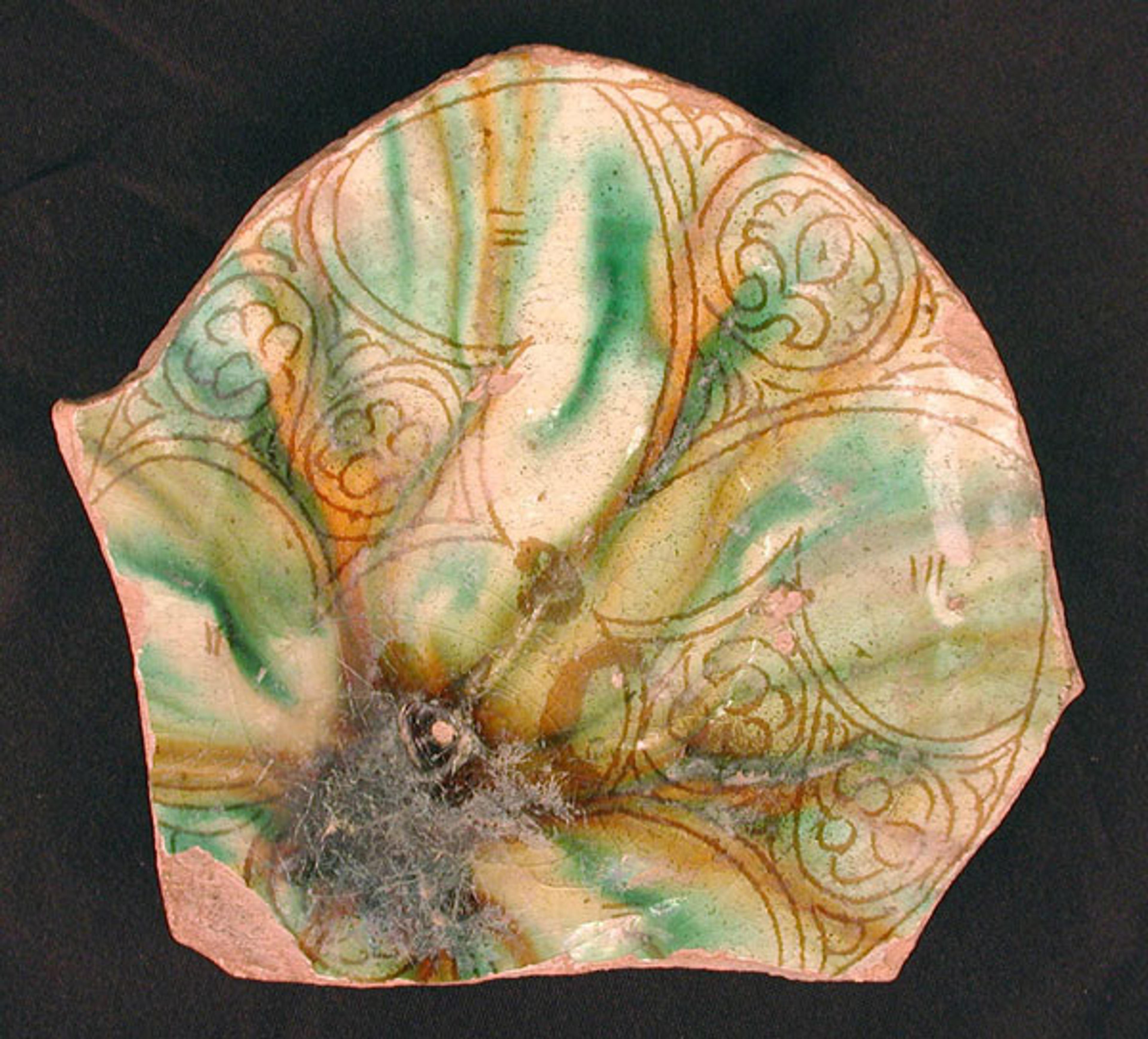
"Umar Aqta." Section from a Qur'an manuscript, late 14th–early 15th century (before 1405). Present-day Uzbekistan, Samarqand. Islamic. Ink, opaque watercolor, and gold on paper. The Metropolitan Museum of Art, New York, Rogers Fund, 1921 (21.26.12)
«Recent visitors to the Met may have noticed more Arabic throughout the building. Magnificent specimens of Arabic calligraphy have always been on display in our galleries, along with examples in Persian and Ottoman Turkish, but the Museum has recently taken on the task of translating educational materials into Modern Standard Arabic (MSA, or al-Lugha al-'Arabiyya al-Fusha in Arabic), a language spoken by hundreds of millions of people worldwide.»
Arabic speakers can now find Museum maps in MSA, as well as select Museum publications including Islamic Art in the Metropolitan Museum of Art: A Walking Guide, and the Metropolitan Museum of Art Guide. The interactive web feature One Met. Many Worlds. is also available in Arabic. The translation of these texts is part of the Museum's ongoing effort to make its educational content available to larger audiences.

The Metropolitan Museum of Art Guide in Arabic
Translation is always a delicate job: some words or phrases simply don't have a clear equivalent in other languages. The process is further complicated when technical vocabulary is involved, as is often the case in art-historical essays. How does one correctly and clearly translate a word like "sgraffito ware," for example? The term is already esoteric in English: it refers to a type of ceramic vessel decorated by incising designs through a white slip so that the color of the earthenware fabric shows through. Sometimes the decoration is finished with splashes of polychrome glazes.

Fragment, 9th–10th century. Iran, Nishapur. Islamic. Earthenware; white slip, incised and splashed with polychrome glazes under transparent glaze (sgraffito ware). The Metropolitan Museum of Art, New York, Rogers Fund, 1940 (40.170.427)
Since "sgraffito ware" is a relatively recent classification developed by connoisseurs of Middle Eastern ceramics operating in English (but using a word derived from Italian!), the term is not necessarily standardized in either English or Arabic. Ideally, we would know the term that artisans working in the pre-Modern Middle East used to describe these vessels, but this is not always the case. Sometimes the best one can do is look at extant essays in Arabic such as archaeological reports or catalogues that might discuss the class of object in question and make an informed choice from there.
The Department of Islamic Art has been thinking through some of the issues involved in translating museum materials into Arabic in collaboration with professional translators as well as colleagues in Editorial. At a recent meeting, representatives from Islamic Art, Editorial, Digital Media, and the Press Office discussed how we might go about facilitating the Museum's ongoing Arabic-translation projects and begin to create standards for in-house publications. Several questions came up. One perplexing issue was how to approach translating names on a document meant for wayfinding. On a Museum map, for example, does it make sense to spell out proper names like "The Grace Rainey Rogers Auditorium" phonetically in Arabic script so that readers can correctly pronounce it? That would give the following term:
قاعة غريس ريني روجرز
Or is it more helpful to print the English name of the auditorium in Roman script so that visitors can identify the sign when they see it, resulting in a sort of hybrid Arabic/English label:
"Grace Rainey Rogers" قاعة
Another issue was whether or not to "translate" proper names in Persian and Indic languages that use Arabic Script into a spelling more natural to pronounce in Arabic when citing them in an Arabic essay. In Arabic, the letter waw (و) is pronounced like an English W. In Persian, which is written with the Arabic alphabet, the same letter is used but pronounced like an English V. According to one school of thought, Persian names with the letter waw (pronounced V) should be rewritten with the letter fa' (ف, pronounced like English F) in Arabic texts so that the reader will understand how to pronounce the name (Fis closer to the sound of V than W is). Another school of thought would keep the word in its original Persian form to preserve the spelling and signal its linguistic origin. Since the Met's collection of Islamic art is strong in the arts of Iran, Central Asia, and South Asia, most departmental translation projects will eventually encounter this scenario.
Sometimes there is no clear answer, and we decided for the moment to handle these questions on a case-by-case basis in consultation with our translators, who have been doing an excellent job so far. Ultimately, we hope that these new translations will make the experience of visiting the Met—in person, on the web, or via one of our publications—more Arabic friendly.
Until next time, ma'a al-salama!